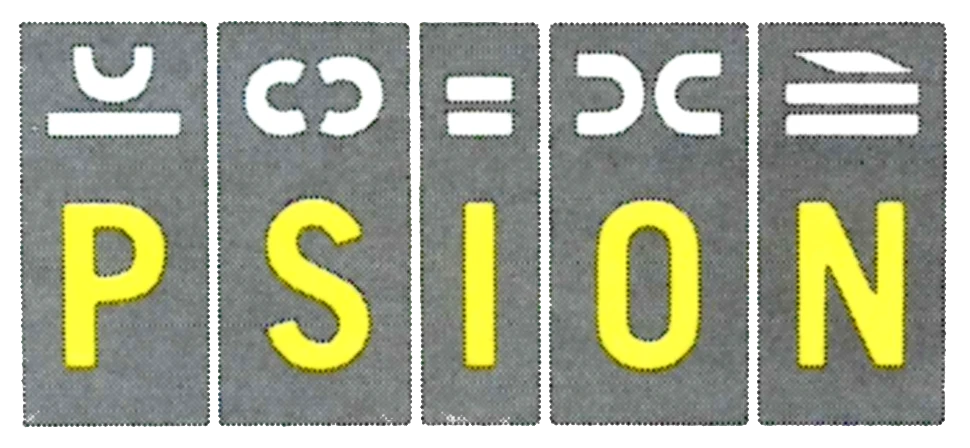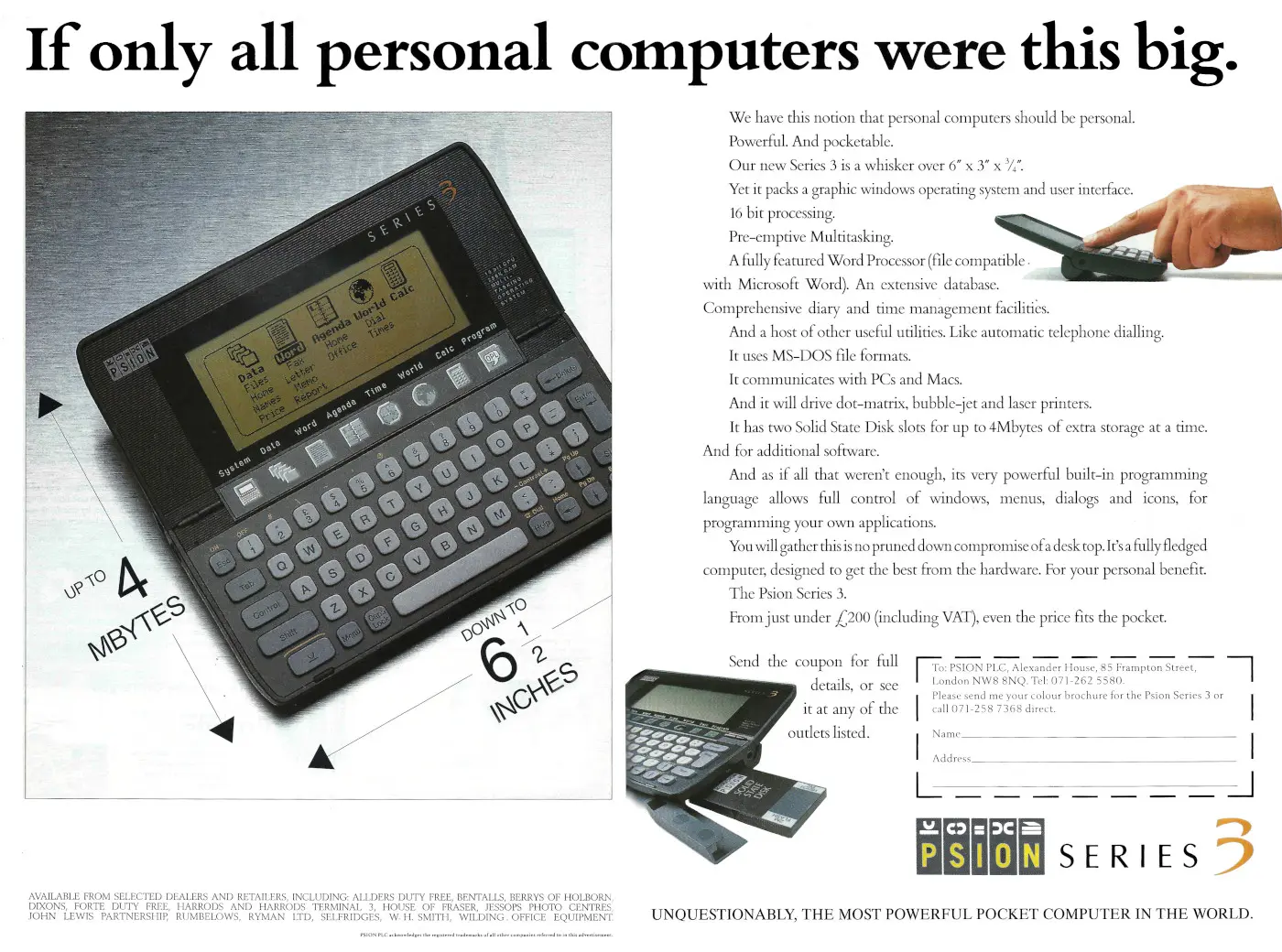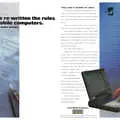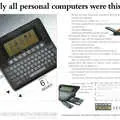
Psion Advert - December 1991
From Personal Computer World

If only all personal computers were this big
The Psion Series 3 - launched in 1991 - was an update of the popular Organiser II (itself an update of the original Organiser), which by 1989 had sold a combined 300,000 and propelled the company to a turnover of £19.2 million and a market capitalisation of £40 million.
It was the company's first clamshell design, and the first to feature a conventional QWERTY keyboard. It ran a 4.7MHz NEC V30 - an 8086-compatible CMOS processor - and came with 128K or 256K of RAM[1].
Although it used the same processor architecture as the IBM PC, it wasn't PC compatible. Instead it provided several well-regarded PDA applications running on the company's new EPOC operating system.
Meanwhile, the Series 3 continued up until 1998, until it was replaced by the Series 5. Psion had deliberately avoiding naming the next model "Series 4" over fears that it wouldn't sell well in its Asian markets, thanks to a fear of the number four[2].
The Series 3, and later devices, were all part of Psion's SIBO - SIxteen Bit Organiser - range[3].
The multi-tasking operatings system that Psion had developed in-house for these devices - EPOC - became known as Symbian when Psion formed a joint venture with Nokia, Ericsson and Motorola.
Symbian would come to dominate the upper end of the mobile phone market - shipping on over 500 million devices[4] - until the advent of the iPhone and Android in 2007.
Psion continued developing various netbooks and PDAs running EPOC up until 1999's series 7, but the market was moving to cheaper models like the Palm Pilot, and PDA's based upon Microsoft's Windows CE. The company was eventually sold to Motorola in 2012.
Date created: 27 February 2024
Last updated: 11 December 2024
Hint: use left and right cursor keys to navigate between adverts.
Sources
Text and otherwise-uncredited photos © nosher.net 2025. Dollar/GBP conversions, where used, assume $1.50 to £1. "Now" prices are calculated dynamically using average RPI per year.




